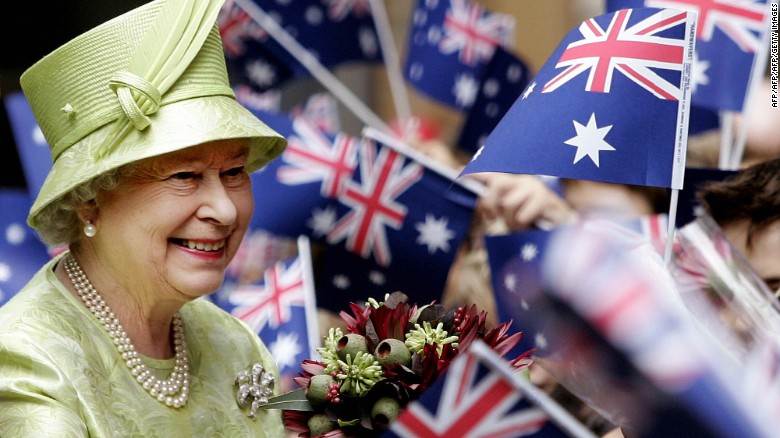This is in no way an all-encompassing list:
1. The US is a republic. Australia is a constitutional monarchy. This means in the US the president is the head of state and head of government. The president is elected by the people. Australia's head of state is the British monarch, currently Queen Elizabeth II. QE2, if I may be so bold as to call Her Majesty, is represented in Australia by a Governor-General chosen by the Prime Minister.
 |
| Queen Elizabeth II, the head of state in Australia. Photo courtesy of cnn.com |
2. The Australian Prime Minister, currently Malcolm Turnbull, is chosen by the elected members of the political party that has won the majority of seats in the House of Representatives. So voters choose a governing party and that party chooses the prime minister. In the US we directly elect a president (except for that whole electoral college thing).
3. Voting in Australia is compulsory. Aussies can be fined for failing to vote. Reports vary, but participation of registered voters is often above 90%. Whoa!
4. In Australia the Prime Minister can dissolve Parliament at any time and call for an early election. In the US elections are on set days for fixed terms.
There are several other distinct differences as well -- things like party allegiance (not as 'tight' in Australia as compared to the US); cabinet appointments (drawn from parliament in Australia).
In a country that seems at least as forward thinking as the US, I was surprised to learn that same-sex marriage is not legal in Australia. There have been many attempts to legalise (<-- do you like how I spelled that ala Aussie?) but none have passed.
There is an upcoming postal vote on marriage equality. This isn't a compulsory vote so its up to each registered voter to decide if they'd like to participate and then vote. If a majority of voters approve same-sex marriage, a bill would go to parliament for passage.
Since 2009 "de facto" relationships (domestic parternships) have been recognised by the Australian government.
Love is love, people. Its time to amend the Australian Marriage Act of 1961.
 |
Thank you for this nice graphic, José Santiago of the World Economic Forum |
4. In Australia the Prime Minister can dissolve Parliament at any time and call for an early election. In the US elections are on set days for fixed terms.
There are several other distinct differences as well -- things like party allegiance (not as 'tight' in Australia as compared to the US); cabinet appointments (drawn from parliament in Australia).
In a country that seems at least as forward thinking as the US, I was surprised to learn that same-sex marriage is not legal in Australia. There have been many attempts to legalise (<-- do you like how I spelled that ala Aussie?) but none have passed.
There is an upcoming postal vote on marriage equality. This isn't a compulsory vote so its up to each registered voter to decide if they'd like to participate and then vote. If a majority of voters approve same-sex marriage, a bill would go to parliament for passage.
Since 2009 "de facto" relationships (domestic parternships) have been recognised by the Australian government.
Love is love, people. Its time to amend the Australian Marriage Act of 1961.
 |
| Thank you Kim / 28blogstreet.com |